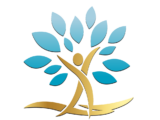Myth #1 : Lifting During Pregnancy is Dangerous
Some worry that lifting during pregnancy could lead to issues like incontinence or prolapse, or even harm the fetus, causing preterm labor. There is also a myth that the Valsalva maneuver, where you exhale forcefully with a closed airway which can affect heart rate and blood pressure, can damage your pelvic floor.

Research by Victoria Meah, published in 2020 in Medicine and Science in Sports & Exercise, looked into the effects of resistance exercise (RE) on heart health in pregnant and non-pregnant women.
The study found no large differences in cardiac responses between pregnant and non-pregnant women doing light to moderate resistance exercise, regardless of using the Valsalva maneuver (VM) or not.

Similarly, a study led by Christina Prevett and colleagues found that heavy resistance training (HRT) during pregnancy didn’t negatively affect maternal or postpartum health. Participants who lifted at least 80% of their maximum weight didn’t experience more pregnancy complications or pelvic floor issues.
Key Takeaways
- Safety and Health Outcomes: Heavy resistance training did not adversely affect pregnancy or postpartum health. There were no significant increases in pregnancy complications, adverse neonatal outcomes, or postpartum health.
- Return to Pre-Pregnancy Activity Levels: Engaging in HRT during pregnancy makes you more likely to return to pre-pregnancy activity levels after giving birth. Which means, maintaining a high level of physical activity during pregnancy can aid in a quicker and more effective return to pre-pregnancy fitness routines.
- Use of the Valsalva Maneuver: Those who used the Valsava Maneuver while weightlifting during pregnancy were also likely to continue it postpartum without significant health repercussions.
- Incontinence and Prolapse: There was no increase in urinary incontinence or prolapse in the lifting group compared to the general population

Contrary to some traditional guidelines that caution against heavy lifting during pregnancy, healthy women who are used heavy lifting can continue their training with appropriate monitoring and adjustments. This can promote better physical and psychological health outcomes both during and after pregnancy.
Fact Check: There is no evidence showing that engaging in resistance training during pregnancy causes harm for women who were used to heavy lifting prior to pregnancy.
Myth 2: High Intensity Aerobic Exercise is Harmful to the Fetus
Some fear that High intensity aerobic exercise may cause miscarriage or preterm labor.
The research article, “Exercise and pregnancy in recreational elite athletes” authored by Kari Bø and colleagues show that regular, moderate exercise doesn’t increase these risks. Even strenuous activity after the first trimester doesn’t seem to harm the fetus.
-
Fetal Heart Rate (FHR):
-
-
- Maternal exercise causes an increase in FHR by 10-15 beats per min., which may be a protective mechanism ensuring the baby gets enough oxygen.
- High-intensity exercise can lead to a brief slowing down of FHR. However, this is typically brief and resolved once the exercise stops
- Fetal HR recovers quickly
-
-
Miscarriage Risk:
-
-
- The risk of miscarriage is primarily influenced by maternal age and underlying health conditions rather than exercise. Studies indicate that regular, moderate exercise does not increase the risk of miscarriage.
- “Strenuous” activity during implantation stage ( 6-9 days after ovulation) may be associated with increased risk of miscarriage
- No increased risk of miscarriage with strenuous exercise after 18 weeks gestation
-
-
Labor and Delivery:
-
-
-
Exercise during labor has been studied in a small number of cases, showing that very intense exercise (up to 60% of VO₂ max) does not adversely affect FHR or lead to complications. The infants in these cases were born healthy with normal Apgar scores.
-
-
-
Fetal Development:
-
-
- There is no substantial evidence indicating that exercise negatively affects fetal development. On the contrary, regular moderate exercise is considered beneficial for both maternal and fetal health.
-
-
General Recommendations:
-
- While moderate exercise is generally safe, certain high-risk conditions may warrant caution or modification of exercise routines. Pregnant athletes are advised to avoid high-intensity training, particularly at altitudes above 1500 meters if not acclimatized, and to ensure proper nutritional intake to support pregnancy needs.
Increased HR is to be expected, we want to make sure we don’t see a decrease in Fetal HR. Also we can take into consideration that exercise may have caused inaccurate readings during testing on the machinery.)
These findings underscore the importance of individualized assessment and monitoring, especially for elite athletes, to balance the benefits of exercise with any potential risks to the fetus!
FACT CHECK: What Lifestyle Factors Influence Miscarriage and Preterm Birth?
According to a systematic review by Chanxi Cai et al., many lifestyle factors are related to increased risks of miscarriage and preterm birth. Here are the key findings:
- Rotating Shift Work: Increases the odds of preterm delivery by 13%.
- Fixed Night Shifts: Increases the odds of preterm delivery by 21% and the odds of miscarriage by 23%.
- Working More than 40 Hours per Week: Increases the odds of preterm delivery by 21% and the odds of miscarriage by 28%.
- Working More than 55.5 Hours per Week: Increases the odds of preterm delivery by 10% compared to working 40 hours per week.
Key Takeaways:
- There is no evidence that high-intensity interval training (HIIT) harms maternal or fetal health during pregnancy.
- Work demands may pose a greater risk to pregnancy outcomes than exercise intensity.

- Makenna Myler: Ran an UNDER 6 MINUTE MILE while 9 months pregnant!
Myth 3: HIIT will cause shaken baby syndrome in utero.
- Fact: Amniotic fluid cushions and protects the fetus. The concern should be more about blunt force trauma rather than the effects of exercise.
A study by Jenna Wowdzia, found that high-intensity interval training (HIIT) during pregnancy didn’t affect fetal heart rate or umbilical blood flow compared to moderate-intensity continuous training (MICT).
The study aligns with the American College of Obstetricians and Gynecologists (ACOG) recommendation of 150 minutes per week of moderate-intensity exercise for pregnant women. The only big difference between the two groups were how time exercising affects the fetus, which is expected due to varied durations. Importantly, birth outcomes did not show any significant adverse effects.
If exercise does not increase the risk of miscarriage or preterm birth, other lifestyle factors might, such as work demands and stress levels. Balancing physical activity with overall lifestyle considerations is crucial for maintaining maternal and fetal health during pregnancy.

Key Takeaways
Maintaining a balanced lifestyle, managing work demands, and engaging in recommended levels of physical activity can help ensure a healthy pregnancy.
-
Continuous assessment of maternal-fetal health throughout pregnancy is crucial, and good communication with healthcare providers is essential.




